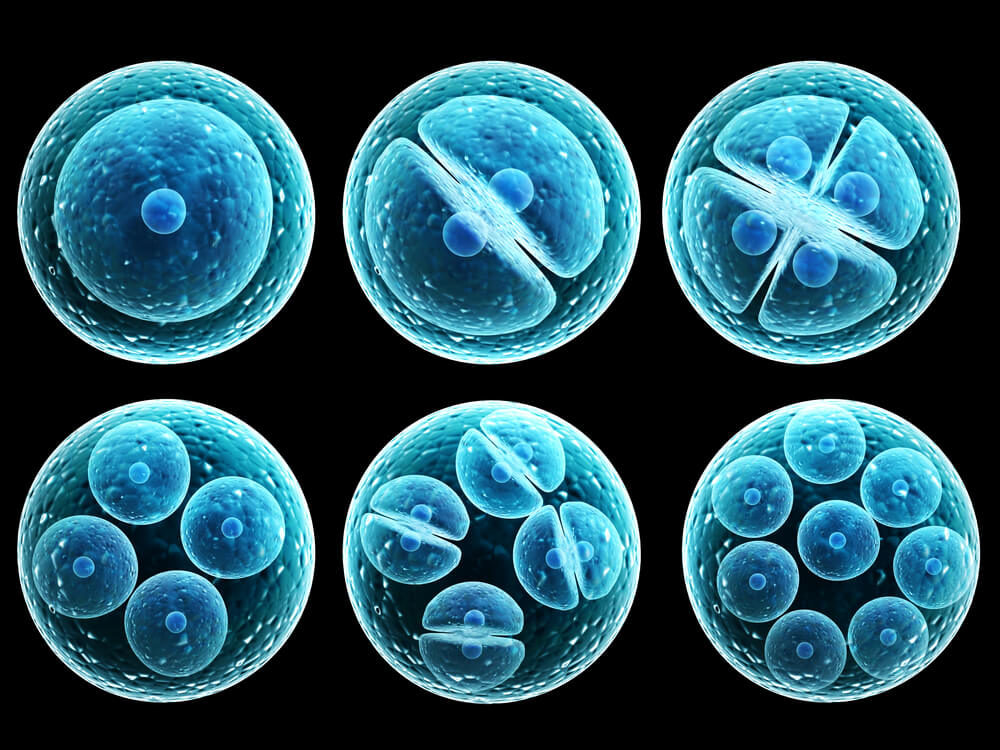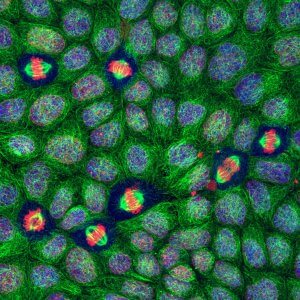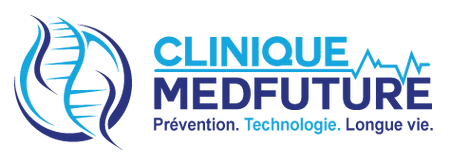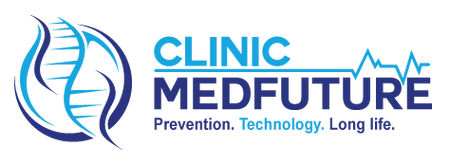Part 3: Central role of stem cells and telomeres during aging

Stem cell exhaustion during aging
In cell biology, a stem cell is an undifferentiated cell capable of both generating specialized cells by cellular differentiation and of maintaining itself in the body by proliferation (or asymmetric division). Stem cells are present in all multicellular living beings. They play a central role in the development of organisms as well as in maintaining their integrity throughout life.
The depletion of the stock of stem cells is one of the risks involved in the aging process [1]. They have the capacity to continue their cell division cycles, beyond the Hayflick limit. This phenomenon is partly due to the presence of telomerase, an enzyme responsible for synthesizing telomeres, which is highly expressed within a normal stem cell [1].
Alterations in telomerase in stem cells linked to signs of aging
Telomerase is expressed at a very high level during embryonic development, then its expression is reduced a few weeks after birth in the majority of adult tissues, with the exception of certain cell types: stem cells as well as cells undergoing renewal. rapid, such as lymphocyte cells or keratinocytes of the skin [1]. The fact that telomerase activity is mainly reserved for stem cells suggests that its level of expression in these cells could be decisive for the preservation of the organism.

In recent years, the specific role of telomerase in stem cells has begun to be elucidated, particularly in hematopoietic stem cells (HSCs) [2][3], epidermal stem cells (ESCs) [4] and neuronal stem cells (NSCs) [5]. For example, it has been observed that in humans and mice, HSCs lose telomeric DNA with age. This progressive shortening of telomeres seems to act as a barrier to the development of HSCs, thus limiting the regeneration of hematopoietic cells and the renewal of all blood cell lineages [2].
Concerning CSEs, the role of telomere length and telomerase activity was established using TERC-/- mouse models, which no longer have the gene coding for telomerase. In these mice, telomere shortening is associated with a decrease in ESC functionality and an inhibition of ESC mobilization (proliferation and migration) outside hair follicle niches [4]. In these mice with telomeres of a critical size, we find problems with skin and hair regeneration, signs of dysfunction of these CSEs. Apart from epidermal cells, it was observed in these TERC -/- mice that other tissues with a high cell turnover rate, such as cells of the bone marrow, intestine and testis, exhibit associated atrophies. to very short telomeres [1]. All of these observations support the fact that telomeres and telomerase are involved in mechanisms for maintaining stem cells and tissue health throughout the body.
Modification of the stem cell environment by telomere shortening
If the shortening of telomeres with age is a factor altering the proper functioning of stem cells, it seems that this process also has an impact on their cellular environment, which could accentuate the deterioration of stem cells during aging [1] . Indeed, it has recently been demonstrated that short telomeres could have negative effects on the stem cell microenvironment [6]. Still in mice no longer having the TERC gene, disturbances in the functioning of HSCs were observed following accelerated shortening of telomeres. This has the consequence of directly affecting the production of B lymphocytes, responsible for the synthesis of antibodies, but also of increasing myeloid proliferation, causing a blood cancer characterized by an uncontrolled proliferation of white blood cells. In addition, the various modifications of the cellular environment also had the consequence of limiting the capacity of a tissue to accept a bone marrow stem cell transplant [6]. A causal link has been demonstrated between these alterations in the stem cell microenvironment and age and have been correlated with progressive shortening of stem cell telomeres.

Thus, in addition to determining the entry into senescence of a somatic cell, telomere and telomerase are involved in the processes of preserving stem cells, cells essential for the maintenance of the organism. If telomerase activity seems to deteriorate with age, its alterations seem to accelerate the mechanisms of aging by leading to the degradation of stem cells. The latter seem to be good therapeutic targets, based on the regulation of telomerase and the maintenance of telomeres, in the fight against aging.
SOURCES:
Katidja Allaoui on http://www.longlonglife.org/
[1] Chatterjee, S. (2017). Telomeres in health and disease. Journal of oral and maxillofacial pathology: JOMFP, 21(1), 87.
[2] Blasco, M.A. (2007). Telomere length, stem cells and aging. Nature chemical biology, 3(10), 640-649.
[3] Leri, A., Franco, S., Zacheo, A., Barlucchi, L., Chimenti, S., Limana, F., … & Blasco, MA (2003). Ablation of telomerase and telomere loss leads to cardiac dilatation and heart failure associated with p53 upregulation. The EMBO journal, 22(1), 131-139.
[4] Cawthon, RM, Smith, KR, O'Brien, E., Sivatchenko, A., & Kerber, RA (2003). Association between telomere length in blood and mortality in people aged 60 years or older. The Lancet, 361(9355), 393-395.
[5] Canela, A., Vera, E., Klatt, P. & Blasco, MA High-thoughput telomere length quantification by FISH and its application to human population studies. Proc. Natl. Acad. Sci. USA 104, 5300–5305 (2007).
[6] Teyssier, JR, Ragot, S., Donzel, A., & Chauvet-Gelinier, JC (2010). Telomere length in the cortex of patients with depressive disorders. L’Encephale, 36(6), 491-494.


